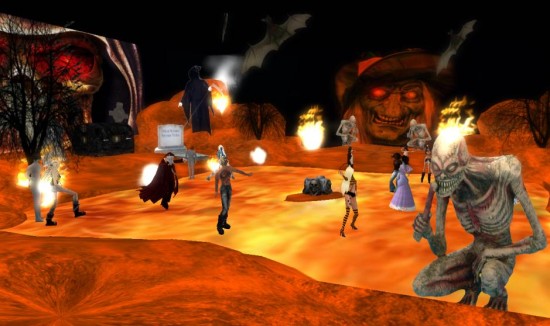The largest social OpenSim-based grids have gained over 1,000 regions since our last count in early September, bringing the total regions on these grids to over 6,500.
These are grids that allow anyone to register for free. In addition, social interaction is a significant aspect of the grid’s activity. In addition, many of the social grids are now accessible from other grids, via hypergrid teleport.
The single biggest gain was on OSGrid, which continues to be the largest social grid. OSGrid currently has over 28,000 registered users, and 3,113 regions.

The largest percentage gain was on the German-language Metropolis grid, which almost tripled in size from 46 regions to 122 regions over the past couple of months.
In addition to these social grids, hundreds of private grids also run on the OpenSim software. By our latest count, there are more than 300 grids, totaling over 1,000 regions.
These two counts only cover the major grids, grids hosted by the top OpenSim hosting companies, grids registered with the major directories, and grids running on Christa Lopes’ Diva Distribution of OpenSim.
They do not include instances where schools, companies, groups and individuals download the OpenSim software and quietly run their own grid. There are many reasons for them to do so, including creating inexpensive platforms to create virtual content for sale on other grids and in Second Life, for creative self-expression in this new medium, for education, for training, collaboration and small-group meetings, and even just to experiment with the technology.
Even without an accurate count of these “dark” grids, the growth numbers are very impressive — especially considering that OpenSim is still “alpha” software and has not yet even reached the 1.0 release.
Second Life, by comparison, has 23,566 resident-owned regions, according to data released earlier this month by Linden Lab.
The growth in the social grids is particularly interesting in that the social aspects are the ones most lacking in OpenSim. Where OpenSim excels is in enterprise integration tools and the ability to fully control the environment. OpenSim also has a significant cost advantage — the server software is free to download and can run on almost any spare computer. And professional hosting starts at around $25 for a full region — compared to $300 with Second Life.
This makes OpenSim a perfect fit for companies looking for a collaboration, training and meeting platform, and for schools looking for a less expensive — and more private — alternative to Second Life.
However, OpenSim-based grids currently do not have the critical mass of users that would create a vibrant social environment. Second Life, for example, has events happening at all hours of day and night catering to all tastes and proclivities.
There is currently no central registration system for grids, no directory or comprehensive search engine. There are some promising projects however attempting to catalog grids, including YoSims, GridHop and MetaverseInk. In addition, the OpenSim open source community maintains a list of grids.
-
OSGrid: 3,113 regions
-
MyOpenLife: 600 regions (estimate)
-
Avatar Hangout: 390 regions
-
The New World Grid: 345 regions
-
Cyberlandia: 270 regions
-
WorldSimTerra: 197 regions
-
ReactionGrid: 185 regions
-
Legend City: 164 regions (estimate)
-
K-Grid: 146 regions
-
3rd Rock Grid: 140 regions
-
MyOpenGrid: 128 regions
-
Metropolis: 122 regions
-
The Gor Life: 112 regions
-
Grid4Us: 94 regions
-
ScienceSim: 84 regions
-
FrancoGrid: 80 regions
-
Open Neuland: 73 region
-
Virtyou: 83 regions
-
Pseudospace: 46 regions
-
Your Alternative Life: 39 regions
-
Twisted Sky: 32 regions
-
Eden Realm: 26 regions
-
GiantGrid: 18 regions
-
Unica Universe: 17 regions
-
German Grid: 17 regions
-
Cuon Grid: 11 regions
-
AnSky: 11 regions
-
V-Business: 12 regions
-
Jamland: 10 regions
-
Emerald Network: 9 regions
-
Open Kansai: 9 regions
-
Wilder Westen: 6 regions
- 2lifeGrid: 5 regions
Total: 6,593 regions
Note: We have not been able to confirm the Legend City or MyOpenLife region counts over the past two months. In all other cases, the grid region statics are either generated by the individual grid servers, or provided to us by grid administrators.
- International singers gather on Alternate Metaverse Grid for first annual International Day - April 15, 2024
- OpenSim hits new land, user highs - April 15, 2024
- Wolf Territories rolls out speech-to-text to help the hearing impaired - April 15, 2024
